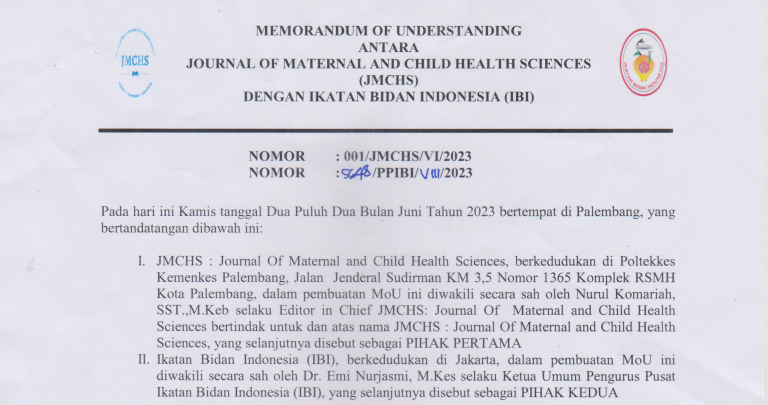The Effect Of Ginger Drinking and Acupressure Therapi On Morning Sickness In Pregnant Mother Trimester I
Abstract
Background: The incidence of nausea and vomiting in pregnancy Based on datafrom the World Health Organization, it was reported that at least 14% of all pregnant women experience nausea and vomiting. The impact of nausea and voiting if not handled properly will cause severe (intractable) and persistent nausea nd vomiting that occurs in early pregnancy resulting in dehydration, electrolyte disturbances or nutrient deficiencies known as hyperemesis gravidarum. Non-pharmacological actions commonly suggested by health workers such as encouraging pregnant women to consume ginger in the form of tea, ginger, relaxation techniques, positive affirmations, and aromatherapy. Objective: This study aims to determine the effect of giving ginger drink and acupressure therapy on the frequency of morning sickness in first trimester pregnant women. Methods: This study uses a Quasy Experiment research method with One Group Pretest And Posttest Design. Sampling using purposive sampling. Samples were taken from all first trimester pregnant women who experienced Morning Sickness and met the inclusion criteria of 41 respondents. Results: The results of this study used the t statistical test and obtained a significant p-value = 0.000 (p 0.05) meaning that there was a significant difference between ginger drink and acupressure therapy on morning sickness before and after the intervention. Conclusion: There is an effect of giving ginger drink and acupressure therapy on the frequency of morning sickness in first trimester pregnant women

This work is licensed under a Creative Commons Attribution-ShareAlike 4.0 International License.
Authors who publish with this journal agree to the following terms:
- Authors retain copyright and grant the journal right of first publication with the work simultaneously licensed under a Creative Commons Attribution License that allows others to share the work with an acknowledgement of the work's authorship and initial publication in this journal.
- Authors are able to enter into separate, additional contractual arrangements for the non-exclusive distribution of the journal's published version of the work (e.g., post it to an institutional repository or publish it in a book), with an acknowledgement of its initial publication in this journal.
- Authors are permitted and encouraged to post their work online (e.g., in institutional repositories or on their website) prior to and during the submission process, as it can lead to productive exchanges, as well as earlier and greater citation of published work












